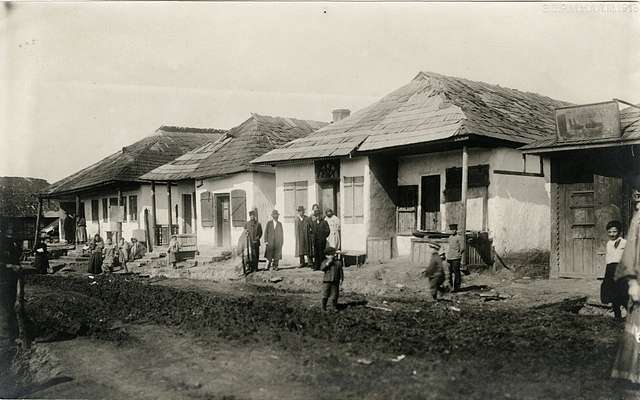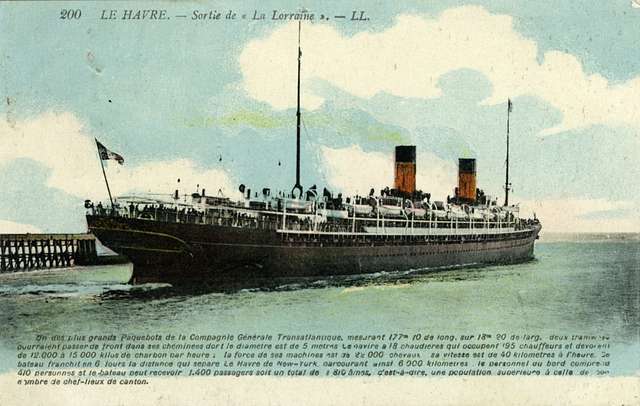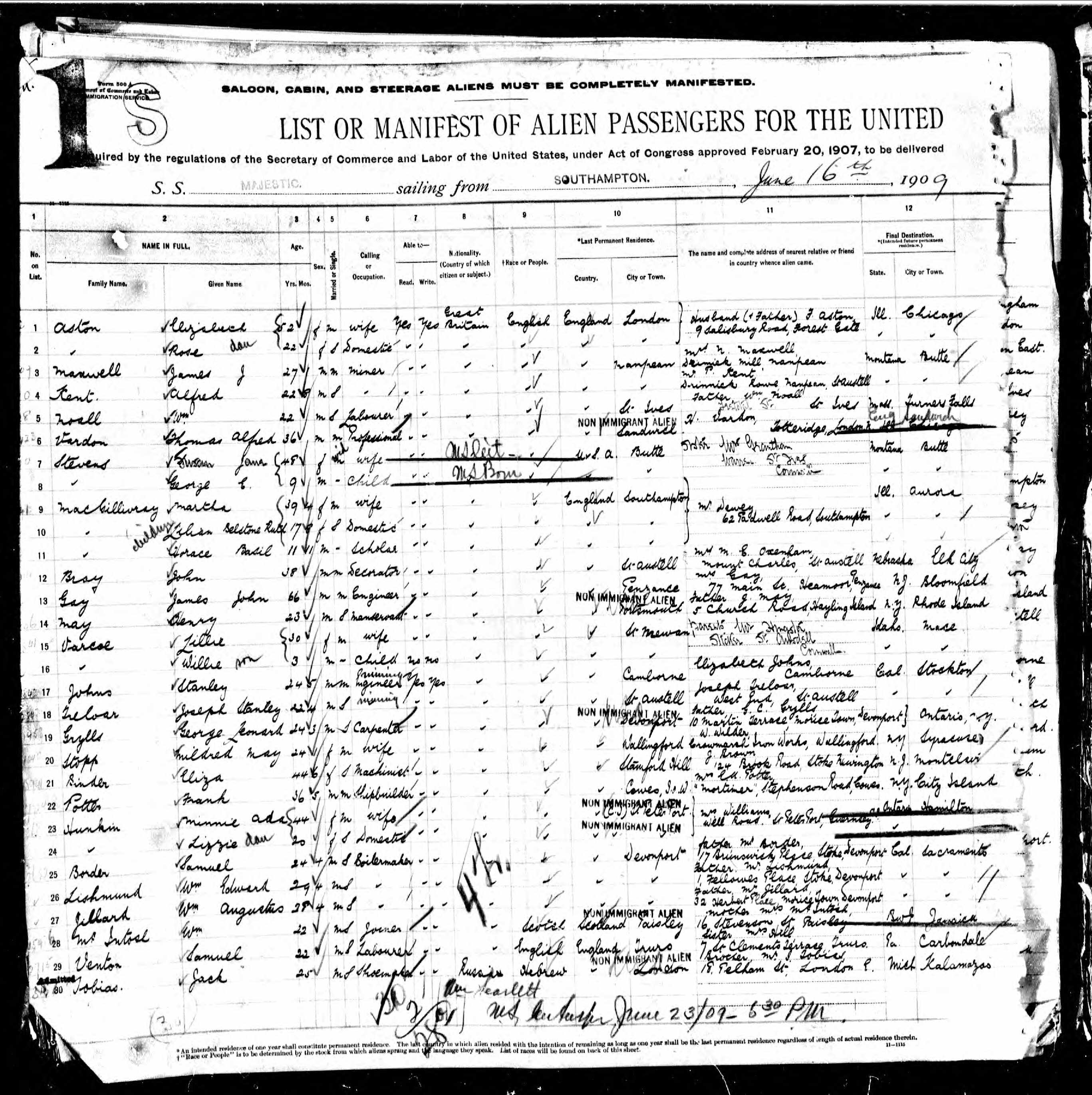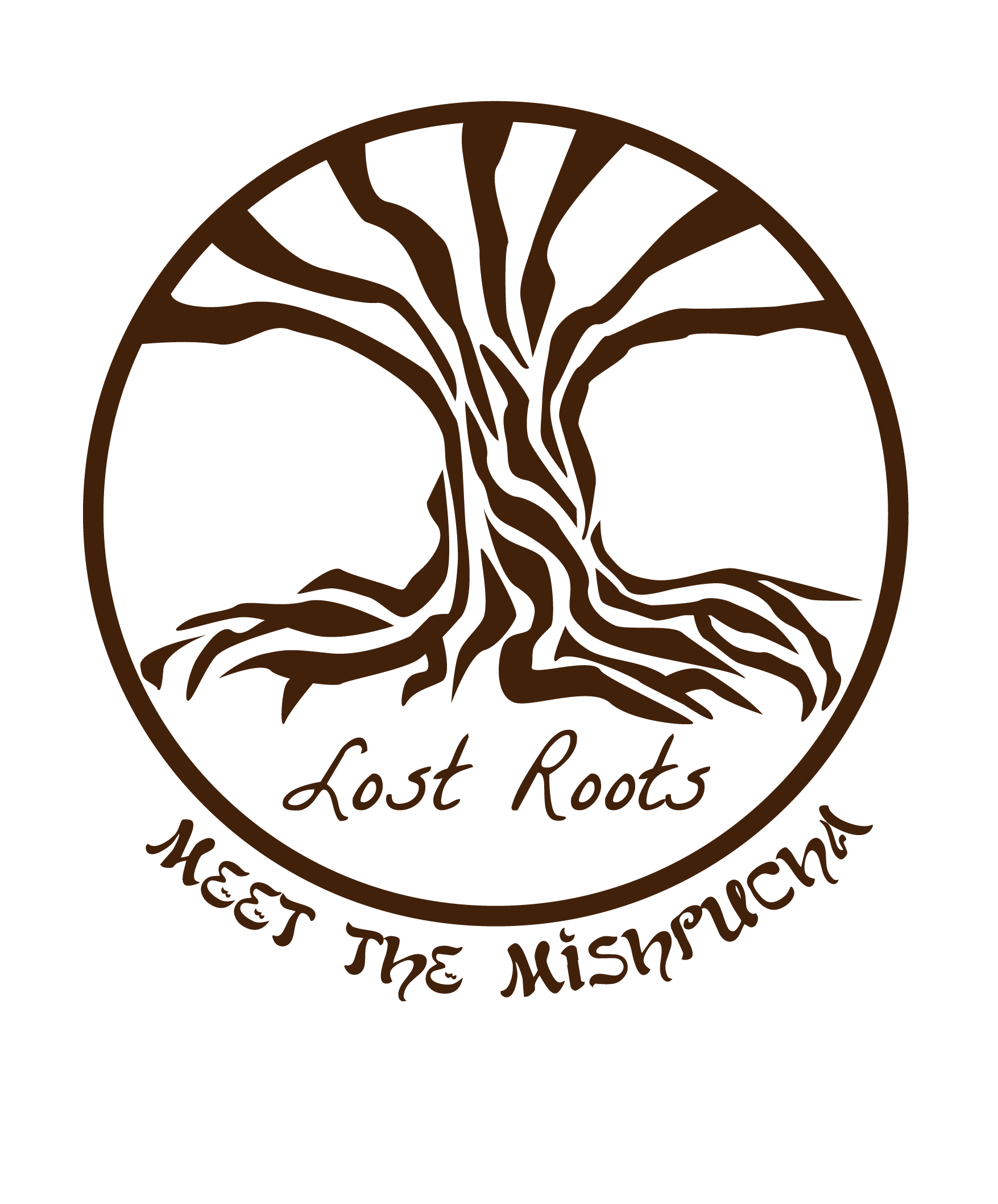Finding Your Family's Town of Origin
The Second Key to Ashkenazi Jewish Genealogy Research: Finding Where Your Family Came from
 To research the deep background about your family, there are two key pieces of information you need to determine. These two critical facts are the keys that will allow you to unlock the story of your family—for Ashkenazi Jewish families from Poland, Lithuania, Belarus, or Ukraine, a story you may be able to take back a century or more before your great grandparents were born. Yet without these two critical pieces of knowledge, it will be impossible to research your family any further than you likely already know.
To research the deep background about your family, there are two key pieces of information you need to determine. These two critical facts are the keys that will allow you to unlock the story of your family—for Ashkenazi Jewish families from Poland, Lithuania, Belarus, or Ukraine, a story you may be able to take back a century or more before your great grandparents were born. Yet without these two critical pieces of knowledge, it will be impossible to research your family any further than you likely already know.
When researching Ashkenazi Jewish families, the first crucial piece of information you need is your family’s original surname. The second one is the city or town your family came from prior to immigrating to the United States. Unless your family immigrated in the recent past and you already know where you came from, this may seem like a tall order. Luckily, however, much information is available to help. Immigration to the United States was heavily documented, particularly beginning in the early twentieth century, and many resources can help shed light on your family’s pre-immigration origins.
Using Ship Manifests to Locate Your Ancestors’ Places of Birth
 One of the best places to find your ancestor’s birthplace is the passenger record for his or her arrival in the United States. Shipping companies kept detailed records documenting the passengers they transported; such information was usually provided to the companies directly by the immigrants. Fortunately, many of these lists are available to modern researchers. In many cases, they are one of the best places to go to determine your family’s town of origin.
One of the best places to find your ancestor’s birthplace is the passenger record for his or her arrival in the United States. Shipping companies kept detailed records documenting the passengers they transported; such information was usually provided to the companies directly by the immigrants. Fortunately, many of these lists are available to modern researchers. In many cases, they are one of the best places to go to determine your family’s town of origin.
Written lists of passengers arriving in the United States first began to be collected in 1819 as an attempt to avoid overcrowding on ships. During the period 1819-1891, these lists, which genealogists now call “customs lists,” were collected by the customs house in each individual port. Unfortunately, 19th-century customs lists contain very little useful genealogical information. Passengers’ approximate ages and countries of origin are sometimes provided, but in most cases the lists do not contain enough information to even identify whether an individual is the same person as a researcher is looking for—let alone to identify his or her birthplace.
Beginning in 1891, passenger lists began to be maintained by the recently created Bureau of Immigration (the precursor to today’s United States Customs and Immigration Service). These lists, termed “immigration passenger arrival lists,” were created primarily to enforce recently drafted federal immigration restrictions. While federal regulations barring criminals and other “undesirable elements” date back to 1875, the first significant qualifications at the federal level on who was allowed to immigrate were first enacted in 1891, several months before the Bureau of Immigration began maintaining its passenger arrival lists.
In 1893, additional federal requirements were enacted which further limited immigration. As a result of this change to federal immigration policy, immigration passenger arrival lists began to include information more useful to modern researchers. Among other things, the new forms asked immigrants for their occupation, marital status, literacy, the amount of money they possessed, and the name and address of the person they were visiting in the United States. However, not all ports used these expanded manifests right away; the extended forms were not uniformly enforced until 1903.

Information of even greater genealogical value began to be added to immigration passenger arrival lists in 1906. In that year, passenger arrival forms began asking immigrants to provide their place of birth. Beginning in the following year, immigrants were also asked for the name and address of their nearest relative or friend in their pre-immigration country. However, the information on these forms was provided to the Bureau of Immigration by the shipping companies—thus, it comes only indirectly from the immigrants. Moreover, it was not legally required to be accurate.
Immigration documents offer a fantastic launching point for your genealogy research. However, the information contained within them, and its quality, varies by date. Unfortunately, it is much more difficult to identify the hometowns of immigrants who arrived before 1906; ship manifests are unlikely to be helpful in such cases. If your family immigrated to the United States between 1906 and 1924, passenger manifests will likely provide considerably more information. However, be sure to take the information provided with a grain of salt, using it as the basis for further research rather than blindly accepting it. Finally, if your family immigrated to the United States after 1924, it is highly likely that the information provided in their immigration visa documents is accurate and complete.
How to Find Passenger Manifests
A variety of records can help you locate your ancestors’ passenger manifests. First, census records typically specify whether individuals were naturalized citizens, had submitted naturalization papers, or were aliens. For people who had already naturalized, most censuses include information about the date of naturalization, while some censuses provide the year of arrival in the United States. Although the information in census records is not likely to be 100% accurate, it does provide a good starting place for further research.
Although censuses give clues as to approximate year of arrival, the best place to find your ancestor’s passenger manifest is his or her naturalization. Beginning in the second half of 1906, naturalization records were required to include certificates of arrival. These certificates, provided by the Bureau of Immigration and Naturalization, were issued to prove that the immigrant had arrived in the United States legally. To produce them, Bureau staff manually checked information in immigrants’ submitted naturalization papers against ship manifests. They issued a certificate of arrival for the immigrant if and when they found a match.

While certificates of arrival are not necessarily guaranteed to be accurate either, they are far more reliable than census records. Moreover, unlike census records, which only provide an approximate year of arrival, certificates of arrival specify both the exact date and the name of the ship your ancestor arrived on. Once you have identified this information, the passenger manifest for that ship and date can easily be found on commonly used genealogy sites.
If you are unable to locate your ancestors’ naturalization, or if it does not contain a certificate of arrival, other sources may help. The Ellis Island-Statue of Liberty Foundation maintains a database of passenger arrivals (https://heritage.statueofliberty.org/), which can also be searched using Steve Morse’s dedicated search engine (https://stevemorse.org/). Other resources, including numerous published books, exist for many of the other common ports of entry into the United States.
Additionally, many Jewish immigrants were aided by the Hebrew Immigrant Aid Society (HIAS). Founded in 1881, HIAS is the oldest immigration aid association in the United States. Records for many, although not all, Jewish immigrants to the United States may be found in HIAS records through the American Jewish Historical Society (https://ajhs.org/holdings/hias-collection/) or the YIVO Institute for Jewish Research (https://immigrationusa.yivo.org/exhibits/show/immigrationstories/migrationcollections/yivohias). Finally, many records can also be found directly via the Family History Center (FHC) or on commercial genealogy sites.

When looking for your ancestor’s passenger manifest record, keep in mind that many immigrants had similar names. When doing your research, you will likely encounter multiple passenger manifest records for the same name—particularly if your family surname is a common one. You will likely need to carefully scrutinize all records you can find, correlating them with additional details and evidence from other sources to determine which one of them, if any, is for your relative and which are for unrelated people with the same first and last names.
Summing Up
Ship manifests are an indispensable resource for genealogy research on Ashkenazi Jewish families, particularly for those families who arrived in the United States after 1906. Your family’s naturalization records will likely allow you to identify the ship they came on and their date of arrival. With a bit of luck, the information in the ship manifest will tell you your family’s town of origin, their most recent place of residence, the name and address of a local contact in the United States, and the name and location of their nearest relative in their place of origin.
If you are lucky, your family’s naturalization records and passenger manifests will provide all the information you need to locate your family in Europe prior to their immigration to the United States. If so, you have now found the two keys to unlocking your family’s deep past. Read on to learning how to research your family’s history in Russia, Poland, Ukraine, Belarus, or Lithuania.
However, if you were not lucky, you might not have been able to find either ship manifests or naturalization records for your family. In other cases, you may have found these documents but they did not provide the information necessary to pinpoint your family’s location and identity before immigration. If so, certain advanced genealogy research techniques may be able to help. In either case, you are likely well on your way to discovering more about your family’s history than you ever thought possible.
